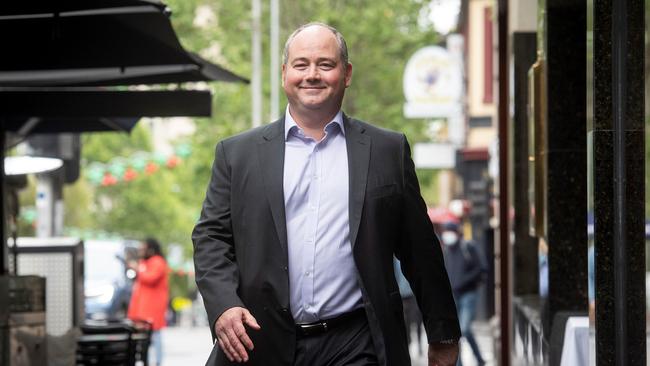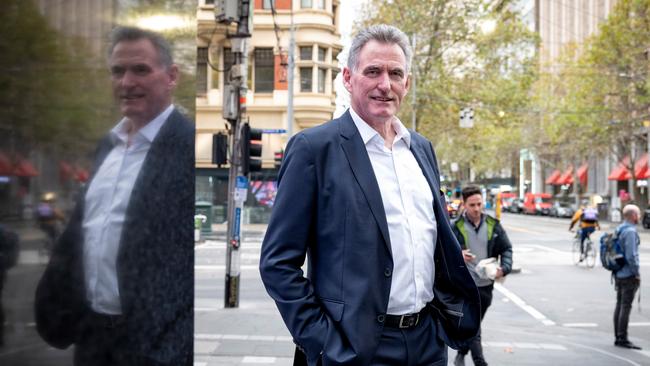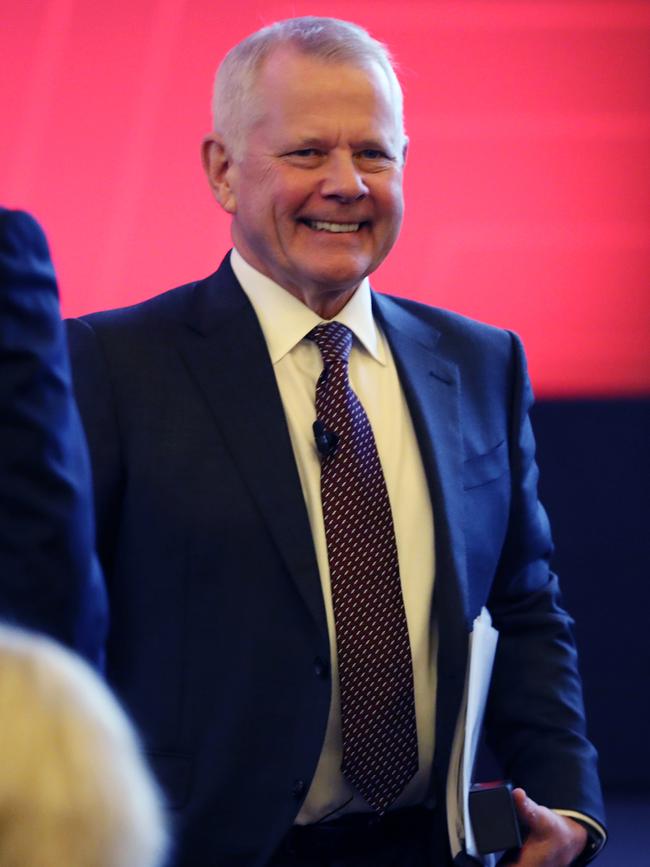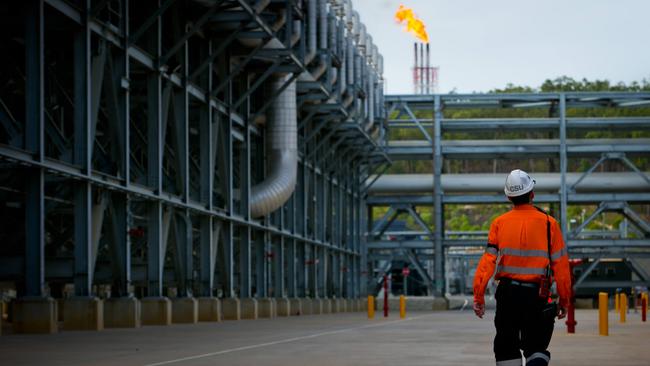
The hardened bank boss was already thinking about retirement when another veteran banker Phil Chronican caught up with him at a restaurant London four years ago to convince him of an encore act: To rescue the badly listing Melbourne lender.
Among the rock star bank CEOs, McEwan was a big name in the independent scene. But he got his big break late in his career. The New Zealand banker had been grinding it out running Commonwealth Bank’s plum retail business, but had been passed over for the top job. However in 2012 he went on to rescue Royal Bank of Scotland, which was still reeling from its near collapse during the global financial crisis.
He told Chronican at the time the NAB mission – which helped him get him a step closer to watching the All Blacks in New Zealand – would be his last executive job and he had no intention of staying on for the peace. That moment has arrived, and he will retire in April just a few months short of his 67th birthday.
Remarkably, McEwan and Chronican started planning for a new CEO on his first day in the job on December 2, 2019.
Importantly both of them had been around Australian banking long enough to know that NAB was the most accident prone. From botched acquisitions, Irish bank robberies to forex trading scandals, NAB has a well-earned reputation to surprise with a negative shock. This was true to form during the financial services royal commission where the scandals kept piling up.
Chronican and McEwan knew they had to put the structure in place, so when McEwan went, NAB didn’t lurch back to its old ways.
An important part of this was to identify an internal successor to McEwan to keep the momentum of his simplification strategy going.
This was McEwan’s playbook at RBS, to untangle everything and keep it simple. The outgoing chief says today there are four concentrated business lines at NAB with a clear strategy in place. To his mind the organisation is ready for a leadership change.
“We’re not in that situation that we were in four years ago, where we were lurching around,” McEwan tells The Australian.
“We’ve got a very strong business bank; a good personal bank that’s growing; a corporate institutional bank that’s put the highest returns in the marketplace and a great business in New Zealand. Just keep looking after those and you’ll keep growing.”
McEwan said he was talking with his chairman about retirement last year and now felt like the right time.
New CEO challenge
NAB has played to its strengths by elevating Andrew Irvine, the executive overseeing the small to mid-sized business unit to replace McEwan from April.
To run a big four bank in Australia you usually have to come down the path of running a retail or New Zealand banking, or at the very least like in ANZ’s case, an institutional bank that looks after the big end of town. Small to mid-sized banking executives are there to deliver the cream of the profits but to rarely be heard.

The first challenge for Irvine, the former Bank of Montreal executive, is to prove to the board he can be a chief executive for the whole bank. The next will be to show that he can keep NAB’s momentum following the exit of a dominant force like McEwan. The executive team Irvine inherits is relatively new compared to rival banks.
Irvine knows this is the challenge. He tells The Australian he doesn’t have the clean-up to do that McEwan had “but we want to maintain the discipline”.
The appointment comes almost five years to the day NAB unravelled on the findings of the royal commission. That set off a savage chain of events including the clean-out of executives and board that paved the way for Chronican and eventually McEwan to take charge.
But the transition means much of the reset under McEwan has been mostly completed. McEwan had always come into NAB with the specific task of stabilising it and had put his own four to five-year limit on the role, although was expected to step down much later this year.
The elevation of Irvine, who edged out NAB’s retail banking boss Rachel Slade, shows what sort of bank NAB wants to be known as.
Under Nobby Clark and then later Don Argus in the 1990s, NAB became the powerhouse bank in Australia with a relentless focus on small to mid-sized lending.
It lost its way through a global expansion where it attempted to build a federation of banks in the UK, as well as Ireland and across the United States. Then it chased the promise of wealth management through MLC and later promoted a string of bankers to build out its main street business.

McEwan, himself a hardened retail banker, wanted NAB to play to its business banking strengths when he took charge. The exit of NAB’s former business banking boss Anthony Healy (who had been passed over for the CEO role) gave an opportunity for a reset and McEwan scoured the world in the midst of Covid lockdowns.
Irvine, then running business banking at Bank of Montreal, came onto his radar. Also a former McKinsey principal, Irvine had worked on a number of roles across the Canadian bank, including a stint running combined the consumer and business operations.
At NAB today business banking overwhelmingly delivers the lions share of earnings – 40 per cent last year. By comparison the bank’s next biggest unit is corporate banking at 23 per cent and 17 per cent from retail banking.
A British-Canadian, Irvine started with NAB in late 2020 when the second wave of Australia’s Covid lockdowns were in full flight. Indeed his first two weeks working at NAB were spent in quarantine in a Sydney hotel. He later did three quarantine stints through Covid as he was relocating his family from Montreal to Melbourne. With the pandemic underway he only met McEwan face-to-face 10 weeks after starting at the bank. Significantly, Chronican was involved in the interview process along with McEwan, showing the succession hunt was well underway even without Irvine knowing.
Under both McEwan and Irvine the business bank has been a key focus for investment. For years it had been ignored while NAB was chasing other adventures. But this has been reversed as it added more than 500 new bankers, introduced automated and digitised processes and was given the balance sheet to go out and lend money.

Taking charge of NAB from April Irvine has two big decisions to make. The first is to find a replacement for his own job as head of business banking. The next is how to keep Rachel Slade, his well-regarded head of retail banking, onside. The other certainty of Australian banking is the candidate that comes second place in the chief executive race finds an opportunity elsewhere.
Santos slides
With Santos left without a merger partner, now it is back on Kevin Gallagher to show he has a plan to put value back in the gas producer. The clock too is ticking on Santos chief Gallagher, who has a lucrative long-term bonus scheme scheduled to unlock at the end of next year. Now the same bonus scheme represent golden handcuffs keeping in place a CEO who is thinking on a much shorter-term horizon.
Santos was the more enthusiastic partner in the mooted $80bn tie-up with Perth energy major Woodside. And the large takeover premium Santos was demanding was unlikely to get off the ground. Apart from the world-class Papua New Guinea LNG project, inherited from Oil Search, and value in the offshore Barossa LNG project that is still under construction, Santos has a portfolio of solid, but unremarkable, conventional gas assets across Australia which are of limited appeal to Woodside. Santos has consistently rebuffed suggestions it needed to engineer a merger with Woodside.

This didn’t stop Santos from demanding a hefty takeover premium, using its own 17 per cent premium with its merger from Oil Search three years ago as a benchmark. On average $6bn-plus energy deals in recent years have commanded a premium of 14 per cent, although some have got away at over 20 per cent.
Here it was important for Woodside boss Meg O’Neill to show her investors she could hold the value line on M&A, even when there are gnawing doubts about the maturity profile of her own portfolio with the North-West Shelf and Pluto starting to decline. O’Neill reinforced this on Wednesday and said she’d only pursue value accretive transactions, adding there were plenty of global options available.
O’Neill for her part has an eye on getting bigger outside Australia and Santos wasn’t part of that plan. She also continues to digest BHP Petroleum assets that delivered oil to Woodside. So another mega-deal in parallel that the Woodside boss was at best warm on was a bridge too far.
Remember when talks between the two first emerged last December it served to benefit Santos, which rallied while Woodside fell. The reverse took place as both companies confirmed talks had ceased on Wednesday.
On Wednesday Gallagher told staff Santos “has a very strong future as an independent entity, our base business is strong and our strategy has significant upside”.
With no other buyers emerging for Santos and activist investors like Melbourne’s L1 Capital sniffing an opportunity, Gallagher now is likely to return to his strategic review. L1 has been campaigning for a break-up of Santos’ conventional gas from its LNG assets (including Barossa). After delivering little from a summer Woodside talks, Gallagher faces pressure to deliver shareholders something.
johnstone@theaustralian.com.au








Ross McEwan was never going to be the long-term chief executive at National Australia Bank.